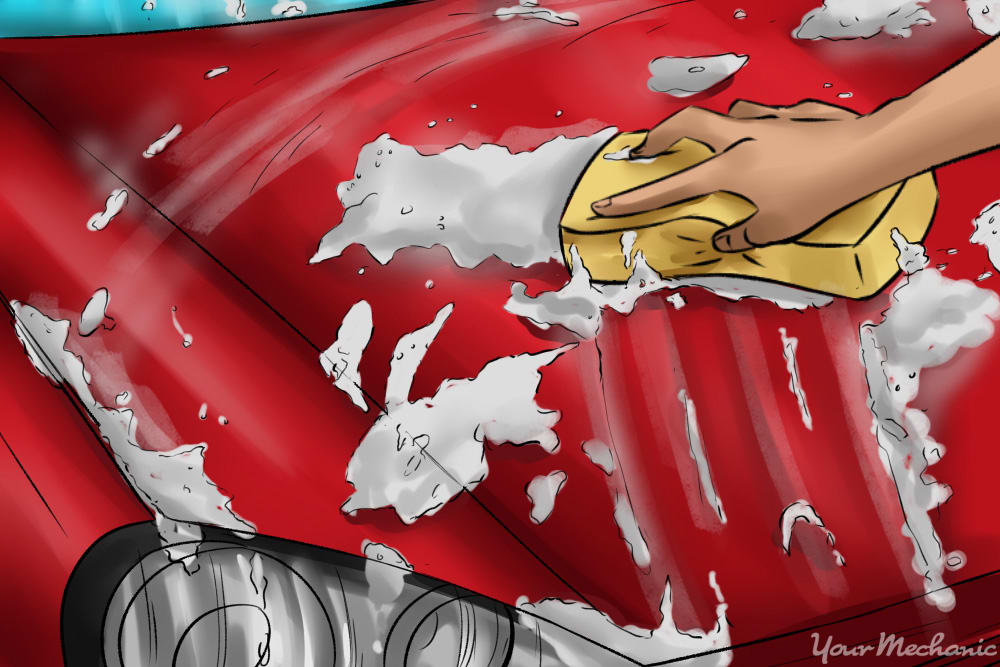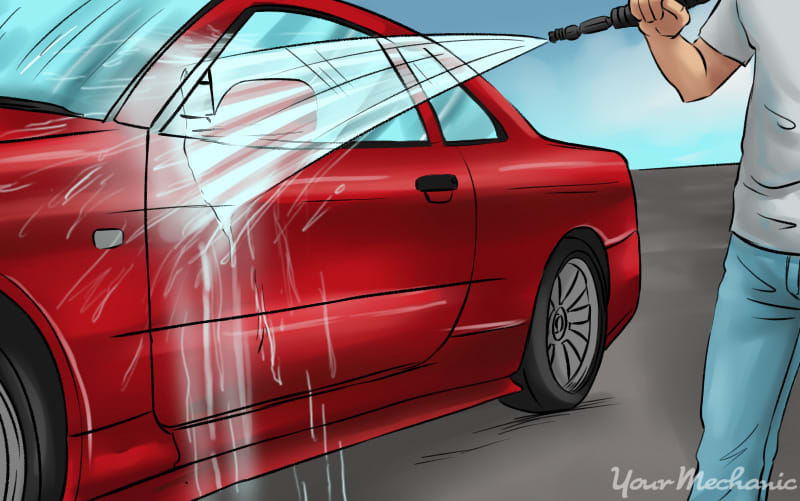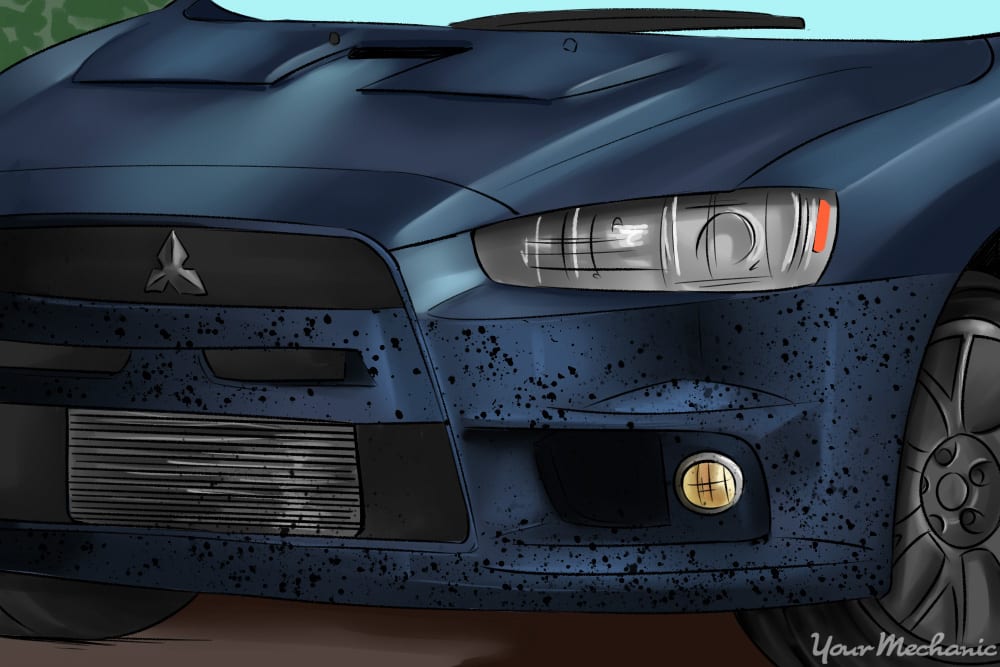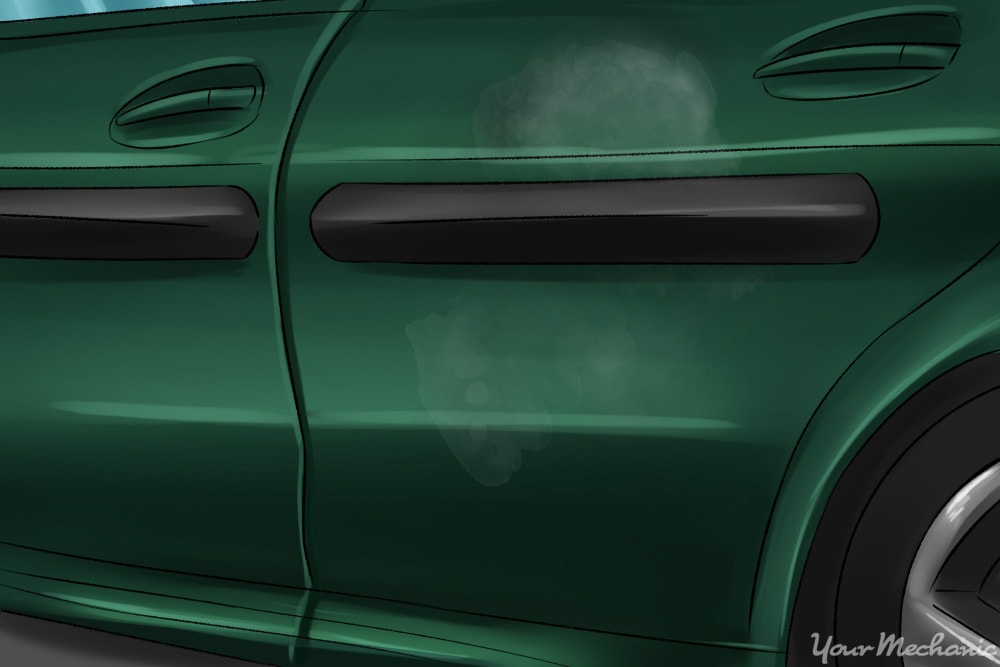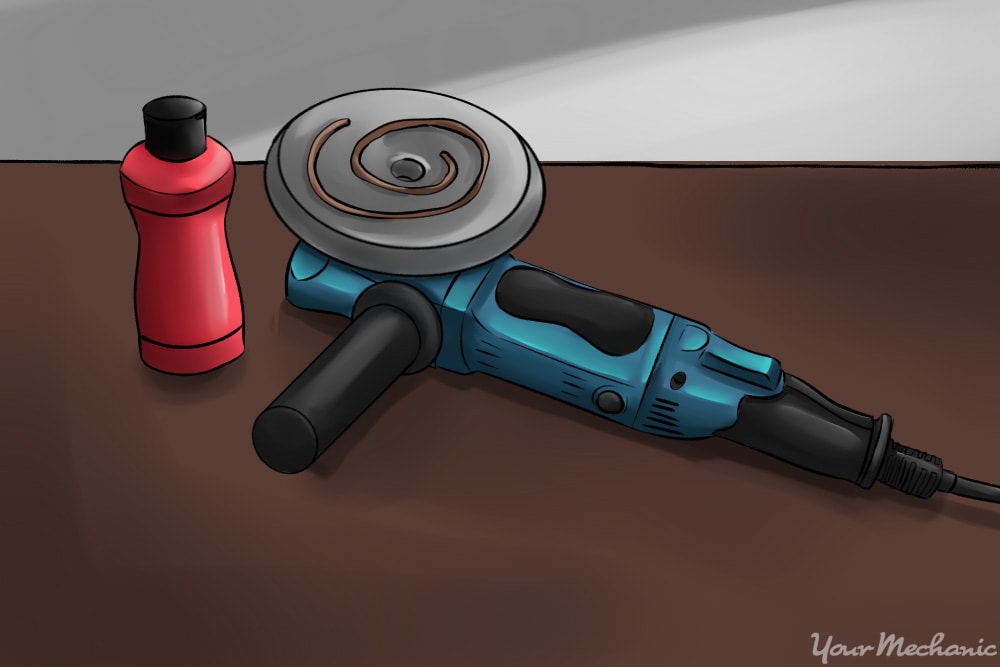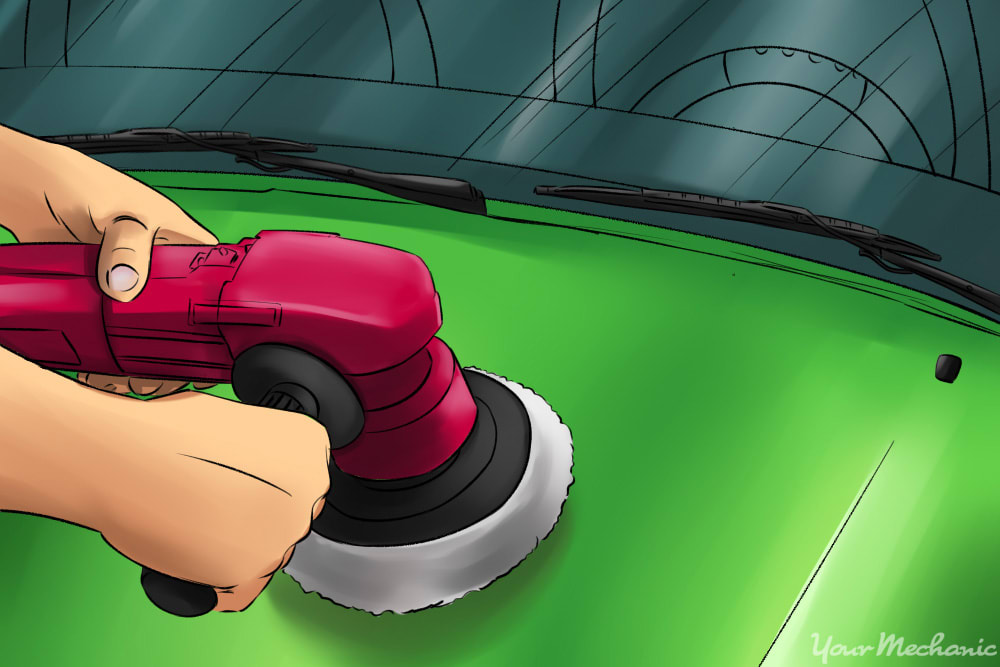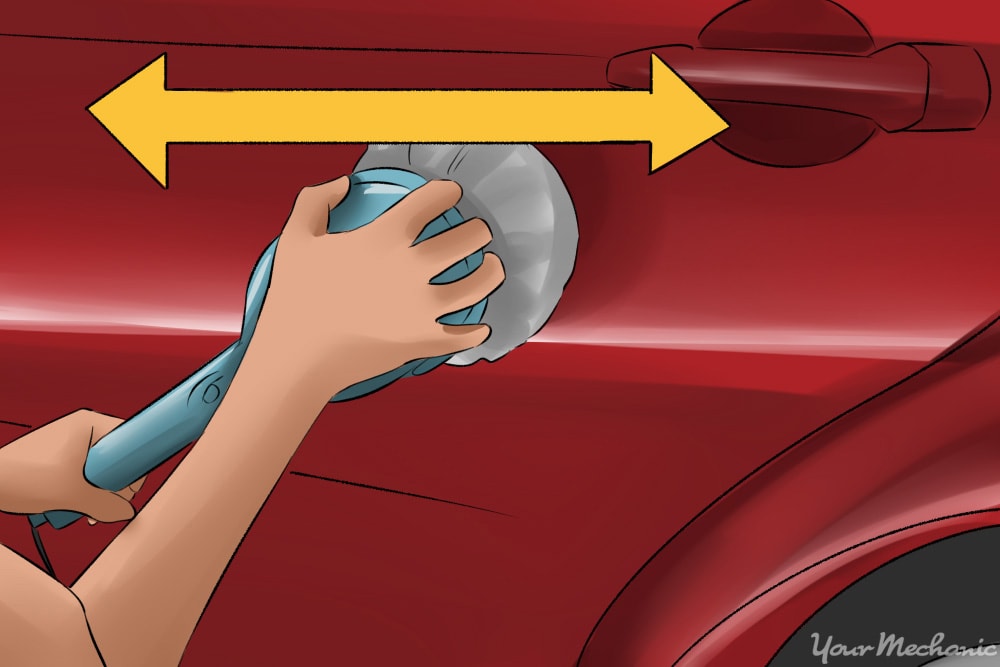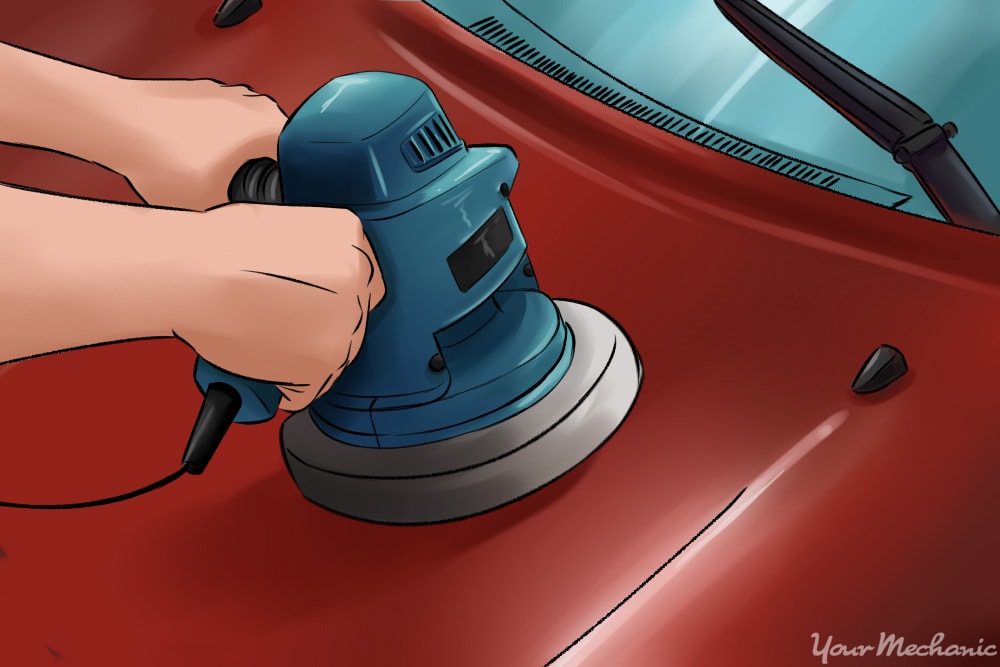

Over time, your paint gets faded and dull, losing some of that new car shine it had when you first got it. Your car’s paint is exposed to environmental elements that cause the finish to pit, corrode, chip, and fade. It can be from things like Acid rain, Aging, Bird droppings, Sand and dust wear on the clear coat or Sun’s UV rays.
Your car’s paint is covered in a clear, hardened substance known as a clear coat. That clear coating protects the actual paint from being bleached by the sun or from being damaged by other elements. The good news is that your clear coat’s appearance can be restored.
The restoration process for restoring the shine to your car’s paint job is known as buffing. When you buff your car, you are not trying to repair deep scratches or blemishes but rather are trying to restore a full, overall shine on the vehicle. You can buff a car from your own driveway, and here's how:
How to buff a car
-
Gather the correct materials - You will need the following to properly buff your car: Bucket of warm water, Buffing compound (recommended: Meguiar’s M205 Mirror Glaze Ultra Finishing Polish), Buffing or polishing pads for tool, Car wash soap, Microfiber cloths, Power buffing tool (recommended: Meguiar’s MT300 Pro Power Polisher), Road and tar remover and Sponge or wash mitt.
Rinse car - Rinse loose dirt from the car with a hose or pressure washer. Wet the entire surface.
Mix car wash soap - Mix car wash soap in a bucket of warm water according to the soap’s instructions.
-
Wash the car fully - Starting at the top and working your way down, wash your car using a soft car wash sponge or a car wash mitt.
-
Rinse and dry the car fully - Rinse the soap off the car with a pressure washer or hose, getting all the suds off the car. Then wipe the car dry with a microfiber cloth.
Remove any stuck on substances - Soak the corner of a cloth in your cleaner and wipe vigorously on the stuck-on spots.
Wipe the cleaner off - Using a dry, clean cloth, be sure to wipe the cleaner completely off.
Re-wash your car - Following the previous steps, re-wash your car and then re-dry it. Then park in a shady spot.
Apply buffing compound - Apply your buffing compound to the surface of your car. Work on one panel at a time, so apply compound to only one panel. Use a clean, dry cloth to buff your car.
Smear compound - Put your cloth on the buffing compound and smear it around to start. Work it on in large circles with light pressure.
-
Buff paint - Buff your paint with the compound in small circles with moderate to heavy pressure. Press firmly to work the extremely fine grit of the compound into the clear coat.
Tip: Work in a pattern so you can be sure the whole panel is buffed.
Dry and wipe - Stop when the panel is completely buffed over once. Wait for the compound to dry, then wipe it off with a clean, dry cloth.
-
Inspect your work - Inspect for a uniform, shiny finish on your paint. If you can see swirls or lines easily, re-buff the panel again. Repeat as often as you need to achieve the high-gloss, uniform finish you desire.
Tip: Allow 2-4 hours to manually buff your car to a shine. Because it takes a great deal of effort, plan to take a break after every 30 minutes or so.
Repeat - Repeat for the rest of the painted panels on your car.
-
Assemble the buffer - A power buffer or polisher can be used to buff your car to a bright, glossy finish. Put a buffing pad on the power buffer. Make sure the pad is designated for buffing or polishing. It will be a foam pad, usually around five or six inches in diameter.
Warning: If the polisher is left too long in one spot, however, it can overheat the clear coat and paint underneath, possibly cutting through the clear coat or discoloring the paint. The only correction for burnt paint or clear coat is to repaint the entire panel, so always keep the buffer moving.
Prep the pads - Prep the pad by applying buffing compound to the pad. It acts as a lubricant, protecting the foam of the pad and the paint on your car from damage.
Set the speed - If there is a speed adjustment, set it to a medium or medium-low speed, roughly 800 RPM.
Apply compound - Apply buffing compound to a painted panel. Work on one panel at a time to ensure complete coverage without missing any spots.
-
Smear compound - Place the buffer’s foam pad against the buffing compound and smear it around a little.
-
Make full contact - Hold the tool so the buffing pad is making full contact with the paint.
-
Turn on buffer - Turn on the buffer and move it from side to side. Use a wide, sweeping side-to-side motion, covering the whole panel in buffing compound. Work over the whole surface using moderate pressure, overlapping passes with the buffer to ensure areas aren’t missed.
Warning: Always keep the buffer in motion while it is turned on. If you stop, you will burn the paint and clear coat.
Tip: Don’t remove all of the buffing compound from the paint with the buffer. Leave a little on the surface.
Wipe down - Wipe the panel down with a clean microfiber cloth.
Inspect - Inspect for a uniform sheen to the whole panel without lines from the buffer. If there are dull spots or you can still see swirls, repeat the procedure. Do as many passes as you need to get a uniformly shiny surface.
Repeat - Repeat on the rest of the panels.
By following these steps, you will find the process to be very simple. For all of your other car troubles, or if you have any questions when installing tire chains, don't hesitate to call a mechanic today.


